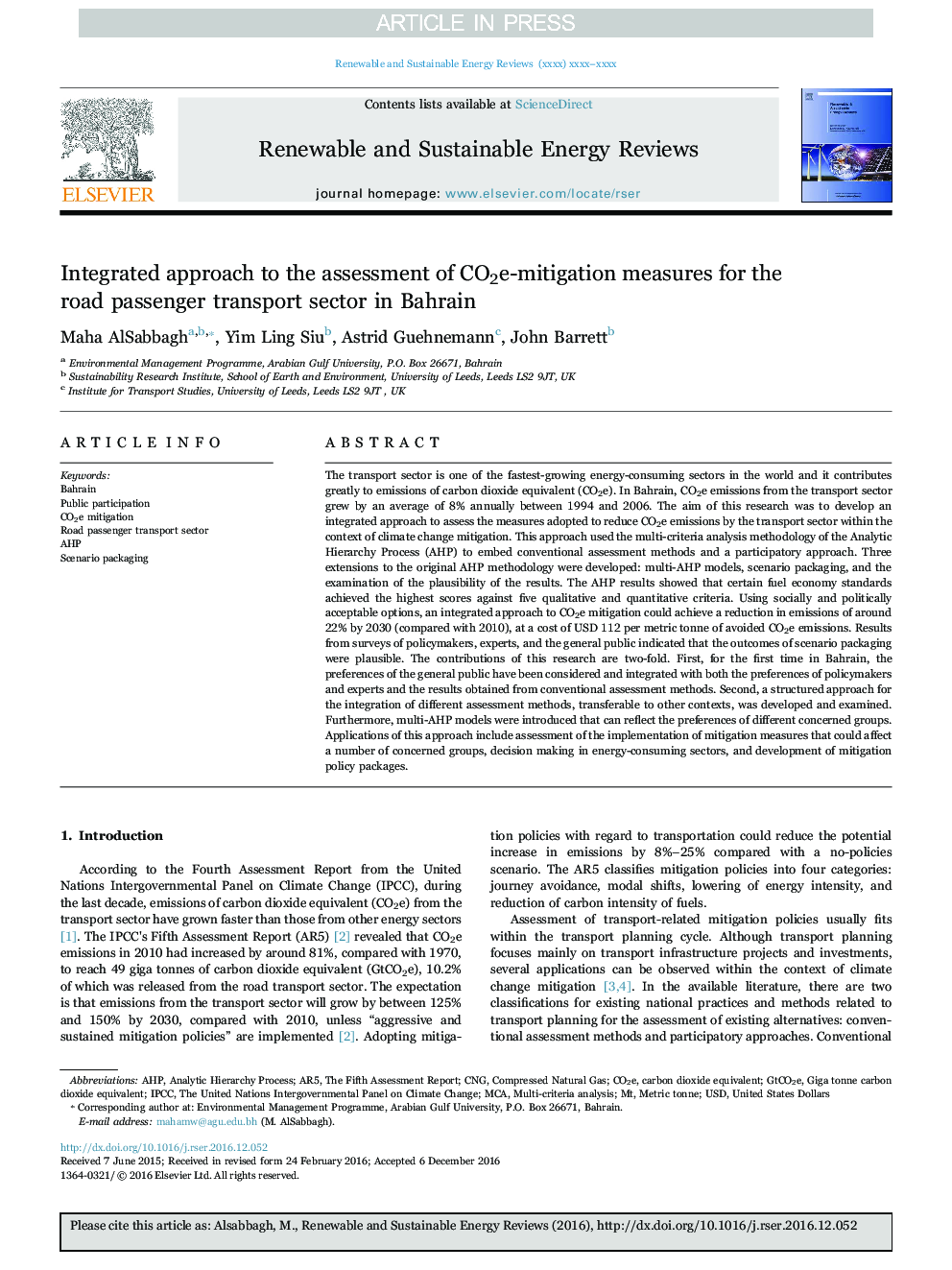| Article ID | Journal | Published Year | Pages | File Type |
|---|---|---|---|---|
| 5483036 | Renewable and Sustainable Energy Reviews | 2017 | 13 Pages |
Abstract
The transport sector is one of the fastest-growing energy-consuming sectors in the world and it contributes greatly to emissions of carbon dioxide equivalent (CO2e). In Bahrain, CO2e emissions from the transport sector grew by an average of 8% annually between 1994 and 2006. The aim of this research was to develop an integrated approach to assess the measures adopted to reduce CO2e emissions by the transport sector within the context of climate change mitigation. This approach used the multi-criteria analysis methodology of the Analytic Hierarchy Process (AHP) to embed conventional assessment methods and a participatory approach. Three extensions to the original AHP methodology were developed: multi-AHP models, scenario packaging, and the examination of the plausibility of the results. The AHP results showed that certain fuel economy standards achieved the highest scores against five qualitative and quantitative criteria. Using socially and politically acceptable options, an integrated approach to CO2e mitigation could achieve a reduction in emissions of around 22% by 2030 (compared with 2010), at a cost of USD 112 per metric tonne of avoided CO2e emissions. Results from surveys of policymakers, experts, and the general public indicated that the outcomes of scenario packaging were plausible. The contributions of this research are two-fold. First, for the first time in Bahrain, the preferences of the general public have been considered and integrated with both the preferences of policymakers and experts and the results obtained from conventional assessment methods. Second, a structured approach for the integration of different assessment methods, transferable to other contexts, was developed and examined. Furthermore, multi-AHP models were introduced that can reflect the preferences of different concerned groups. Applications of this approach include assessment of the implementation of mitigation measures that could affect a number of concerned groups, decision making in energy-consuming sectors, and development of mitigation policy packages.
Keywords
Related Topics
Physical Sciences and Engineering
Energy
Renewable Energy, Sustainability and the Environment
Authors
Maha AlSabbagh, Yim Ling Siu, Astrid Guehnemann, John Barrett,
